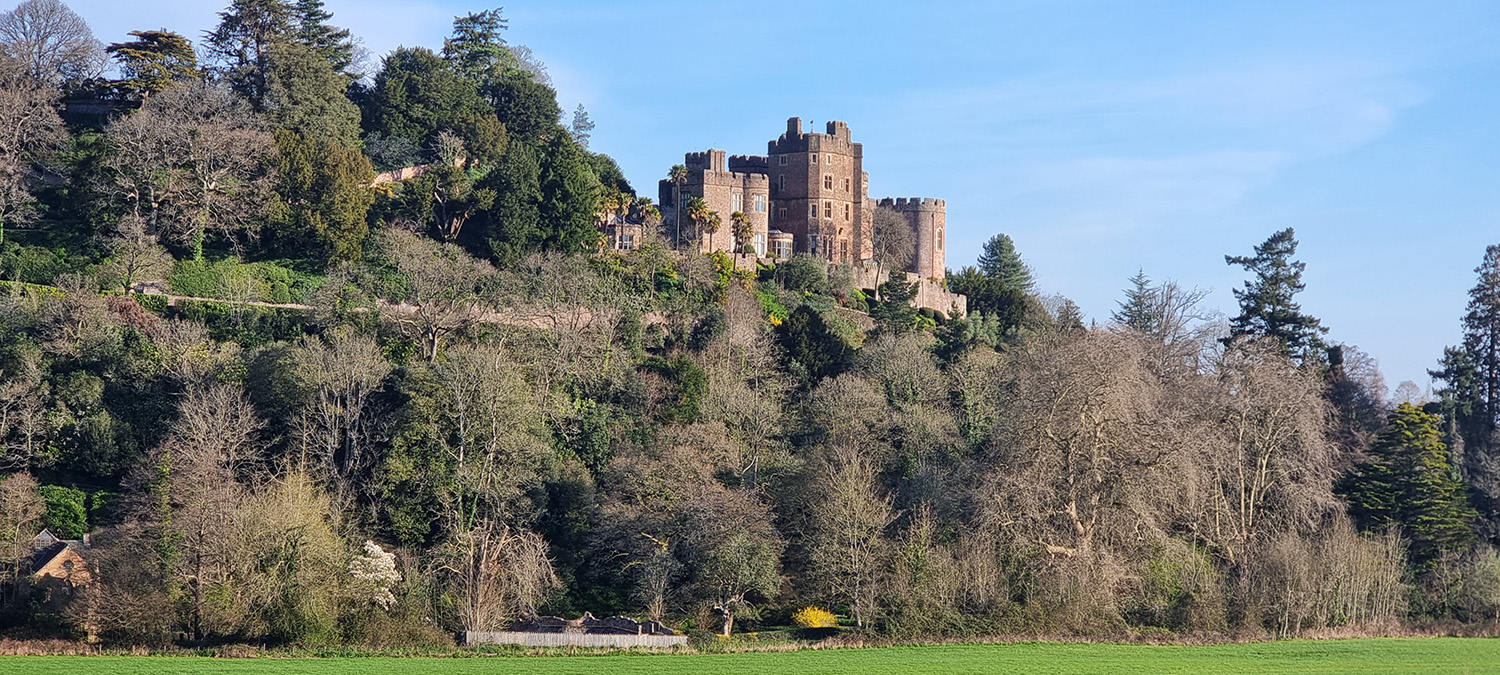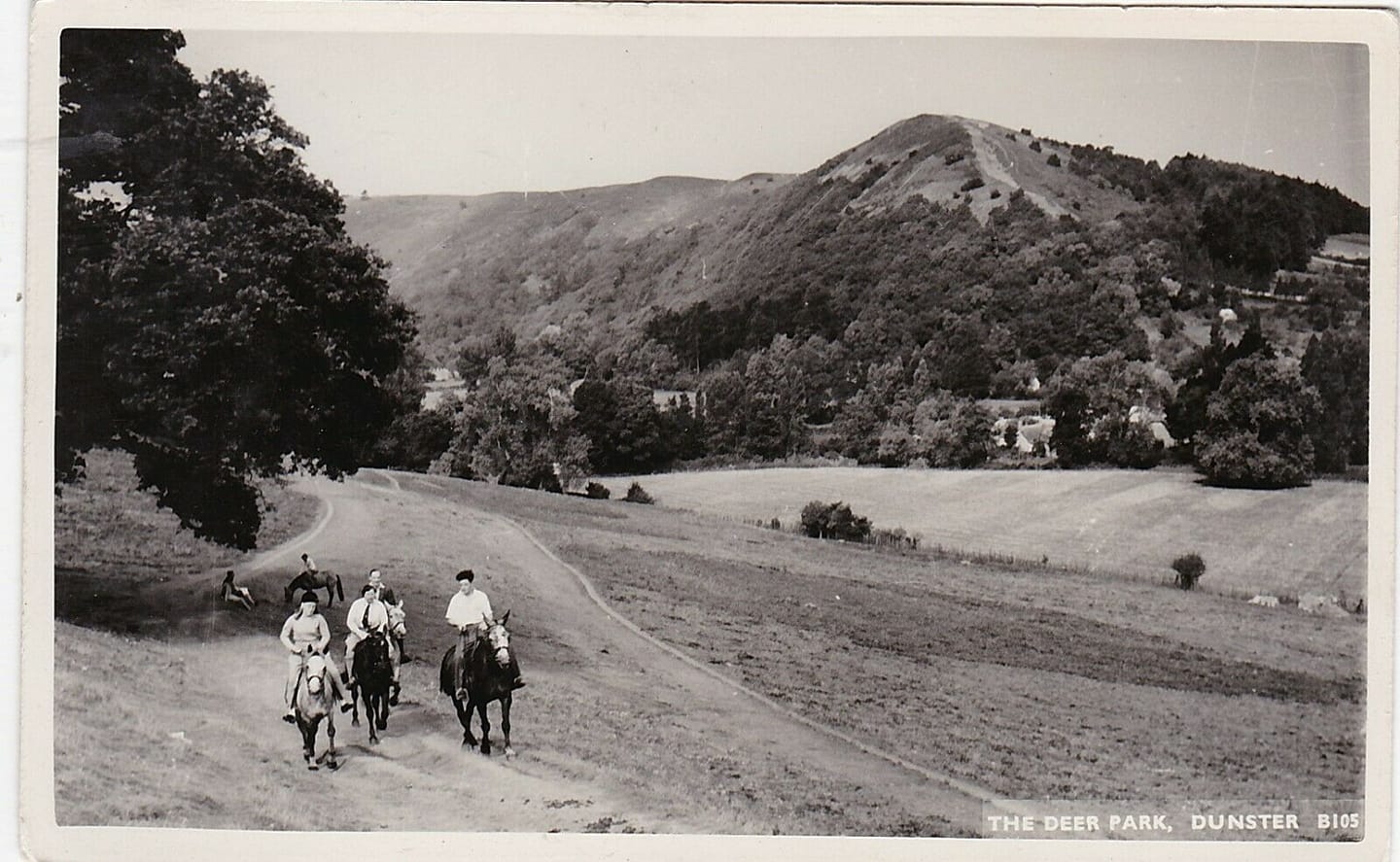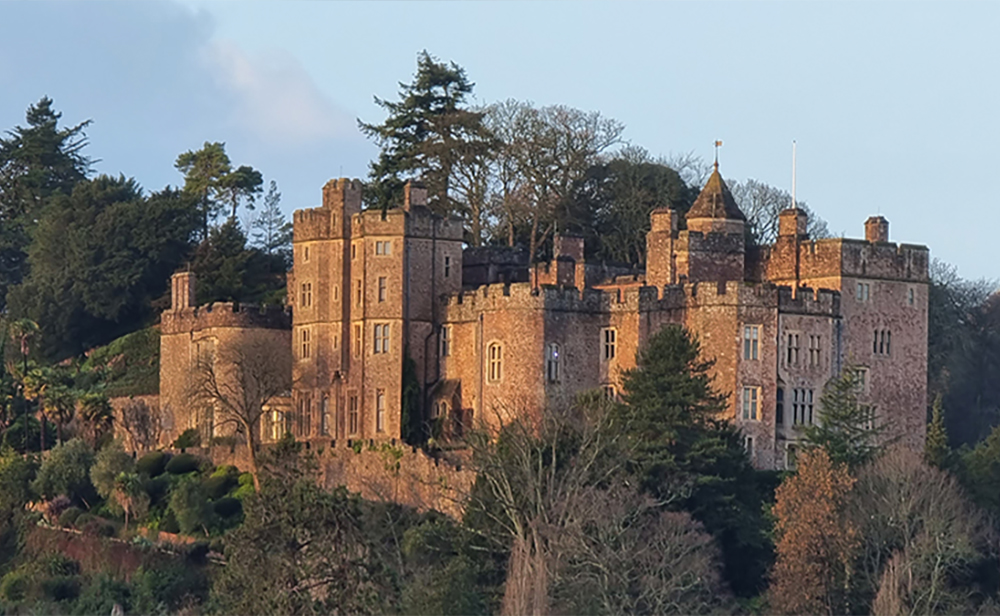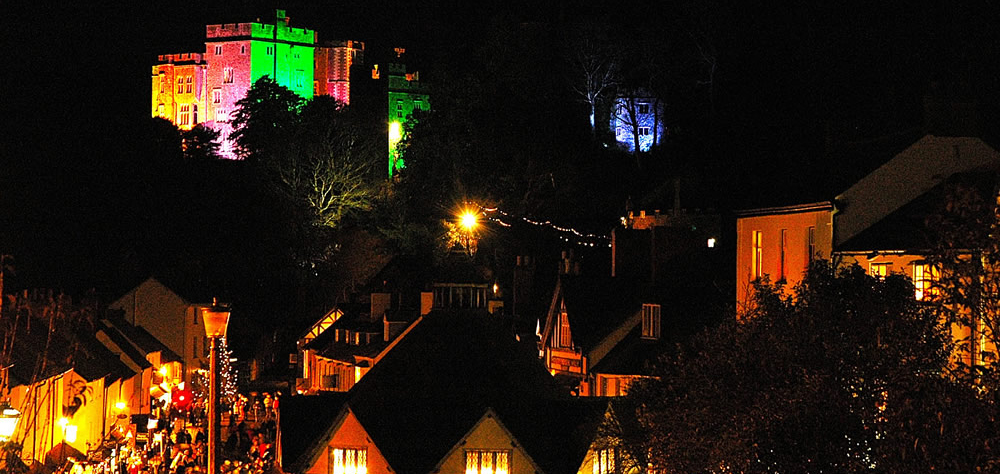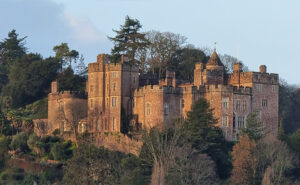Dunster, a charming village located on the northern edge of Exmoor is an old and picturesque place. The name comes from the ridge of hills and the fortified tower that make up its crest. The village was a hub for the local wool trade and was located near Dunster Haven. It was busy exporting local products.
The Castle overlooks Dunster’s main thoroughfare. At its center, George Luttrell built a charming Yarn Market in the 17th-century. The village was owned by the Luttrell family for 600 years and was still their home until 1950. It has remained untouched and unaltered over the centuries because of this. You will find old coaching inns and medieval-stone-built houses along the main street. Some of these buildings date back to the 13th-century. Many of these buildings are now converted into charming little shops and tearooms.
Tourists love the village, which is home to many restaurants and bars. The Priory Church of St George is another notable building. Also, the Nunnery and Dunster Mill are also noteworthy. The ancient Gallox Packhorse bridge spans the river Avill at the southern end of the village. Dunster is not the only beautiful town in this area and here we give examples of these and why.
Porlock
Porlock village is located in the fertile Porlock Vale. It’s a bit inland from the Porlock salt marsh or the shingle Ridge. You will find a variety of independent shops and quality shops along the High Street that runs through the village. In the middle of the village is the medieval church of St Dubricius.
Porlock is known for its steep Porlock Hill. The main road towards Lynmouth runs through it. It is the highest hill on any main road in England and was once a real problem for drivers and old cars. There is a pretty toll road that winds less steeply up the hill for those who don’t want to climb this hill. The views from the top are some of the most spectacular on Exmoor.
Minehead
Minehead, a busy seaside resort on the edge Exmoor is home to many. You will find a beautiful sandy beach, quaint harbor, and bustling High street full of shops and cafes to get you started. There are many things to do in Minehead, including guided walks and golf, as well as railways, restaurants, markets, and other attractions.
Minehead had a small port in 1380. It grew to be a major trading center in the medieval period. In 1791, a large fire brought a resounding defeat to the town. The town’s popularity grew with the rise in sea bathing. The area was soon recognized as a desirable place to retire by 1851. The broad shopping street was built in the early 20th century and is surrounded by Edwardian-style architecture.
Allerford
Allerford, a charming village located east of Porlock is home to the historic and iconic Pack Horse Bridge.
The Grade II listed bridge that spans the Aller Brook in picturesque 15th-century is supported by two segmented arches. There are many charming period homes in the village. The West Somerset Rural Life Museum is located within the village. It also houses the Victorian Schoolroom, a beautiful thatched building that was once the village’s school during the 19th century.
It is ideally located to visit the Selworthy Beacon. The hill rises towards the beacon. Take a stroll and enjoy stunning views over the bay and eastern Exmoor.
Blue Anchor
Blue Anchor is a beachside village in the parish of Old Cleeve near Carhampton, Somerset West and Taunton districts of Somerset, England. Blue Anchor Bay was once known as Cleeve Bay. The village’s name comes from a 17-century inn. JMW Turner painted the bay and inn in watercolor in 1818. It is now on display at the Lady Lever Gallery in Port Sunlight.
This village is located at the Blue Anchor to Lilstock Coast Site of Special Scientific Interest. Along this coast, the Triassic Cliffs are of geological importance for their variety of fossils. Watchet Blue is named after the colour of the coloured alabaster found on the cliffs.
Lynton and Lynmouth
Lynton and Lynmouth, two picturesque villages located on the Exmoor coast, are both easily accessible.
Pretty Lynmouth offers a tranquil escape from the hustle and bustle of modern life with its charming rows of fishing cottages, shops, and a beautiful harbor filled with gently bobbing boats. Lynton, perched high above, is a lively Victorian village that retains a charming mix of times past and present.
Lynton is located 500 feet above Lynmouth. The two towns can be connected by Lynton & Lynmouth Cliff Railway. It is a must-see and must-do attraction with stunning views of the bay. Lynton is a charming village that boasts many excellent independent shops as well as an impressive town hall.
Lynmouth lies at sea level, with a small harbor and Rhenish Tower dominating its harbor wall. You will find many interesting shops on the High Street, which is pedestrian-only. Near the Exmoor National Park Visitor Centre, you will find interactive displays, plenty of information, and even a small theatre that shows Exmoor videos.
Watchet Harbour
Charming little town on the coast with a marina, great holiday accommodation, an Old Port, and charming houses and shops. It is a great place to spend a few days or longer. Enjoy walks along beautiful coastlines, or simply sit down on the Esplanade and enjoy a cider or ice cream, both made locally. The accommodation at Watchet is also one of the best in Somerset.
You can visit The Mineral Line, both museums, and the Watchet War Memorial. Also, check out the Steam Railway, Hellwell Bay Fossil Beach and Paddling Pool, St. Decumens Church, Holy Well, and the Marina. The memorial sports ground has public tennis courts, a children’s playground, and an outdoor gym.
Selworthy
Selworthy, a charming village of thatched cottages is located 3 and a 1/2 miles west of Minehead. It’s situated just off the A39 between Minehead & Porlock. This road includes the hamlets Of Allerford, Bossington, and Tivington.
This charming village of thatched cottages with its historic All Saints white Church perched on the side of the hill offers breathtaking views of the Vale of Porlock and the surrounding moors. It is part of National Trusts Holnicote Estate which covers over 12,000 acres of Exmoor coastline and countryside.
There are many wonderful walks and wildlife in the village. From the village, there are many footpaths that lead to Selworthy Beacon. Exmoor ponies can be seen grazing on the landscape. The views extend to the sea, Dunkery Beacon, Dunkery Moors and heather moors to the west and Minehead towards the east.
Bossington
Bossington, a coastal hamlet, is located within the Holnicote Estate of National Trust. This estate covers 12000 acres of Exmoor National Park. Bossington is easily reached by a short walk, which will take you to its pebbly beaches or up to Hurlstone Point. For a longer hike, the South West Coast Path can be used. You can enjoy picturesque views of the village and many thatched cottages. Many of these are owned by The Trust.


